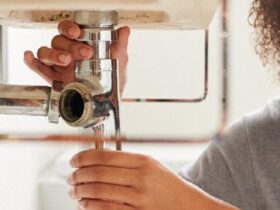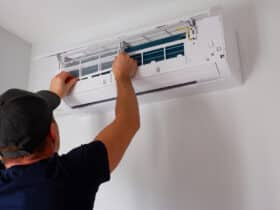A mossy roof may give you the aesthetic of a charming country cottage, but the look isn’t worth the damage it will cause. Unlike most plants, moss gathers moisture from the leaves rather than the roots. This means that moss will happily root through your shingles, creating cracks and the potential for leaks. If left untreated, moss will shorten the lifespan of your roof and cause rotting in the wood underneath. In addition to the damage caused to the roof, moss could also create an opportunity for mold to grow in the attic.
If you notice moss starting to grow on your roof, you should have it dealt with immediately. Here’s everything you need to know about what causes moss to grow and how to get rid of it.
What Causes a Mossy Roof?
Moss tends to thrive in damp, dim areas. If your roof is typically bathed in sunlight with few shady trees around it, you probably won’t struggle with a mossy roof. If you live in a rainy area, however, moss can be a genuine concern. That’s why those quaint European cottages that you see in fairytales tend to have moss on the roof.
Moss is highly invasive and resilient. While it makes for a great lawn cover if you don’t like mowing, moss spreads quickly and will grow almost anywhere. That’s why even some houses in sunny locations have moss-covered roofs. While moss isn’t a fungus, it does spread in the same fashion. The moss plant releases spores into the air, which travel, then settle and grow.
If you have any lifted shingles or encounter a resilient breed of moss, your roof is susceptible to complete moss coverage. According to Roof Plus, it’s essential to deal with the issue while it is small before it becomes an expensive and time-consuming endeavor.
Does a Mossy Roof Need to be Replaced?
A mossy roof only needs to be replaced if the coverage is substantial and impacts the structure underneath. If you catch moss early, you can even protect the shingles where it’s growing. The trick is to act fast when you notice moss starting to take hold, rather than waiting for it to root through the shingles.
A skilled roofing service can assess the issue and let you know whether you need a simple cleaning, if you need a few shingles replaced, or if a complete overhaul of your roof is required.
How to Remove Moss from a Roof
Removing moss from a roof requires a special solution that kills the moss and makes it easy to scrape off. As you would have to get on the roof and walk around to do this work, it’s always better to call a professional service. They’ll also use a solution that won’t damage your shingles and often have an eco-friendly product as well.
Once the solution is applied, it will be left to soak for 20 to 30 minutes. Then, the roofing specialist will brush the roof with a soft-bristled push broom to push the moss off without damaging the shingles underneath. Depending on the service you’ve chosen, they may also apply a sealant to help prevent future moss growth.
If you’re getting moss removed from your roof, it’s integral to cover the plants and landscaping in the surrounding area. Otherwise, they may suffer the same fate as the moss.
How To Prevent a Mossy Roof
To prevent a mossy roof, schedule an annual roof cleaning or maintenance visit to ensure your roof is free of debris. Keep your gutters clear of debris as well.
You can also use zinc strips to deter moss growth — you’ll need to replace these every few years. Finally, trim back trees to limit the shade on your roof to make the environment less moss-friendly.
If you like the look of a charming country cottage with ivy-covered walls and a moss-covered roof, consider investing in a living green roof. Or, keep those dreams for when you retire to the European countryside; moss has no place on your house.













